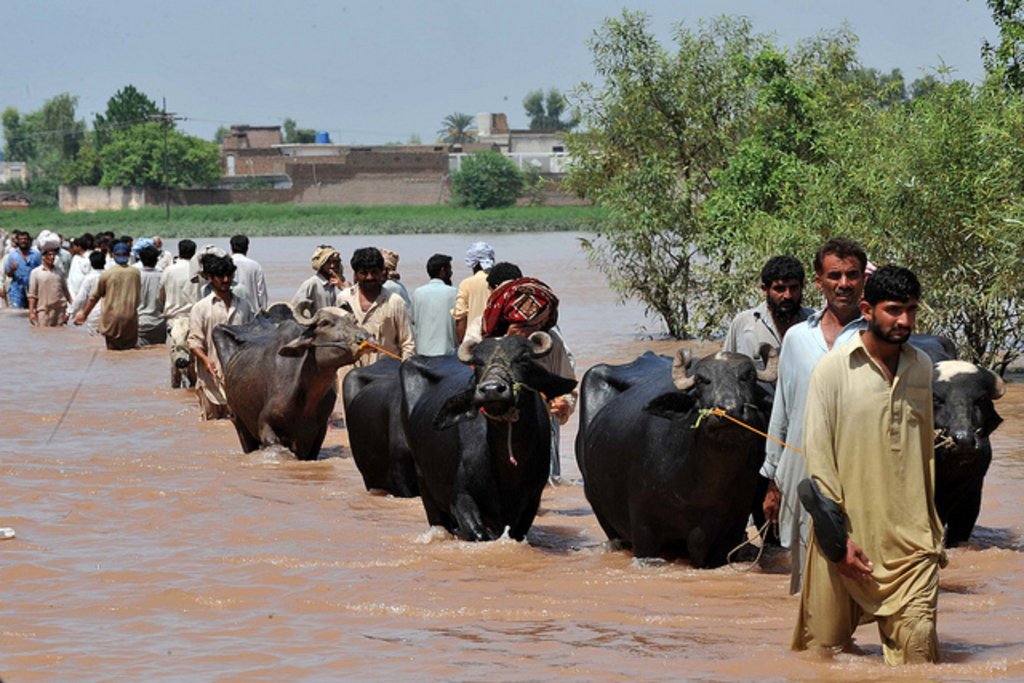It has been established that those living in poverty will suffer disproportionately more from the adverse effects of the climate crisis than the rich, a phenomenon known as the ‘climate caste system’. How then, can poorer nations protect themselves from the damaging effects of the crisis?
Last year, Indonesia announced its plans to move its capital city from Jakarta to a province in Borneo because of the sea level rise that has left the city ravaged by a steady stream of floods and land subsidence, the latter caused by Jakarta’s excessive extraction of groundwater. The relocation aims to ease the pressure on Jakarta by moving its administrative functions about 1 000km to Kalimantan.
Construction on the new capital will begin next year and by around 2024, the government expects to start moving some of its 1.5 million civil servants to the new bureaucratic centre, but the majority of its nearly 10 million residents are likely to stay.
While Jakarta is one of the fastest sinking cities in the world, sinking up to 25cm a year, mainly due to thermal expansion of the oceans caused by the climate crisis, most of the more developed countries who have contributed to the exacerbation of the crisis- for example, the UK, who contributed significant emissions during the Industrial Revolution- are experiencing arguably less disastrous effects. Over the last decade, other less developed nations in the Pacific with lower GDPs have been lost to the sea, many being Small Island Developing States (SIDS). These include Nuatambu, an island in the Solomon Islands that has lost half of its inhabitable area since 2011.
In the photo: Muara Baru, one of the fastest sinking areas in Jakarta. Photo Credit: Unsplash.
Meanwhile, massive swarms of locusts have swept across much of East Africa, including Uganda, Tanzania, Kenya, Ethiopia and Somalia, decimating food crops and threatening millions more people with hunger in an already fragile region.
Like many states in the region, Kenya, Somalia and Ethiopia are positioned to be some of the countries most affected by climate change, despite their low carbon emissions. Kenya ranked in the top 50 most vulnerable countries by the Global Climate Risk Index in 2017, but contributes 0.13% of worldwide global emissions.
Countries at higher latitudes are less affected by sea level rise and other impacts of climate change. This is the definition of climate injustice, also referred to as the ‘climate caste system’.
Certain communities around the world that already experience multiple burdens, such as being unable to relocate or rebuild after a disaster or living in areas particularly vulnerable to the climate crisis (like along the coast), are also disproportionately affected by the climate crisis. Indonesia is again one example of this.
Many of the lower-income countries are located in tropical regions where the climate is similar year-round and crops have not adapted to a changing climate like they have in more temperate regions, thus causing crop failure (many crops in temperate regions become dormant during the winter, arguably preparing them more for changes in temperature). Therefore, the same amount of warming in temperate regions has less impact than it does in these tropical regions, many of which have agriculture-dependent economies. Current evidence suggests that poleward regions where agriculture is limited by short growing seasons are more likely to gain while subtropical and tropical regions may be more likely to suffer drought and losses in productivity.
Rice is one major example of this. Many people in lower income countries, including Indonesia and Cambodia, rely on selling rice for their livelihood. However, because the crop is unable to adapt to changing climates, yields have been decreasing by 0.3% per year due to the climate crisis. In these countries, 16% and 6% respectively are surviving on $1.90 a day or less. These low-income workers suffer the most from the effects of climate change due to failing crops as a result of rising temperatures. Further, prices are increasing due to the scarcity of the grain, causing many to be unable to obtain it. As many people in lower income countries in tropical areas are more dependent on crops for their income, they are impacted by the climate caste system a lot more than people in higher income countries whose main source of employment is in high-paid tertiary sector jobs.

In the picture: Graph showing that those that contribute fewer emissions will be adversely affected by the climate crisis. Picture credit: Samson et al, 2011.
Those governments of less developed countries (except India which is the 3rd largest emitter) often lack the ability to adequately address greenhouse gas emissions as their contributions to the problem are negligible. They are therefore forced to rely on those developed countries who emit these gases to make changes. However, these developed countries are not affected as much by the problem and in fact benefit from emissions, so they have less incentive to reduce their carbon footprint.This exacerbates climate inequality further as it gives vulnerable countries less power; the people in these countries have little to no opportunity to migrate to improve their quality of living.
The climate caste system is not only happening between countries, but within countries as well. For example, the impacts of Hurricane Katrina in 2005 impacted poorer cities more than their wealthier counterparts, with the more deprived town of Biloxi in Mississippi suffering the most. The climate crisis increased the intensity of the hurricane and, as the sea level around Biloxi was already high and few defences were put in place due to a lack of funding for the area, the town was hit especially hard. The sea walls were between 6 inches and 4 feet high, however waves reached 20-30 feet high in this area. Even two years after the hurricane, houses in Biloxi were still deteriorating. Residents whose homes were destroyed in the hurricane were only re-homed by the government five years later and even then, casinos were the first to be rebuilt in an effort to bring money into the area (Climate Justice by Mary Robinson).
It is often the poorest in society that are forced to live in areas that are at the greatest risk of being lost to the sea or last to be rebuilt after a severe climate crisis-induced disaster. It is imperative that governments of more developed nations work collaboratively with those of less developed countries to share technology, insights and funding to help buffer the poorer nations against the harmful effects of the climate crisis.
In the cover photo: Displaced people fleeing Sindh streamed into Balochistan. Photo credit: Abdul Majeed Goraya/IRIN.
Editor’s Note: The opinions expressed here by Impakter.com columnists are their own, not those of Impakter.com. Photo Credit: Earth.Org.












